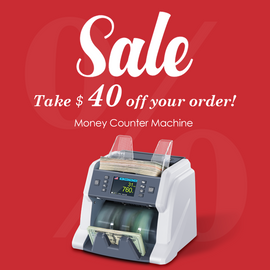Embarking on the journey towards becoming a proficient coin collector is akin to stepping into a realm filled with history, art, and endless learning opportunities. Whether your newfound interest in numismatics is fueled by an appreciation of historical artifacts or a simple penchant for shiny trinkets, starting on a solid foundation is crucial. In this article, we'll navigate through the essential steps and resources that will not only reward you with a collection you can proudly display, but also steer you clear of unwarranted financial mishaps.
Step 1: Acquiring Basic Knowledge from Various Sources
Before diving into the coin collector's world, it's prudent to equip oneself with basic knowledge about coins, their history, and valuation. Here’s a compilation of recommended resources to get you started:
-
Book Recommendations:
- The Official Red Book: A Guide Book of United States Coins by R.S. Yeoman
- Coin Collecting for Dummies by Neil S. Berman and Ron Guth
-
Forum Recommendations:
- CoinTalk
- The Numismatic Forum
-
Video Recommendations:
- YouTube channels such as Numistacker and CoinHELPu
-
Podcast Recommendations:
- The Coin Show
- The Coin World Podcast
While exploring the foundational knowledge of coin collecting, you should pay attention to the following crucial points:
-
Ways to Collect Coins:
- Thematic Collecting: For instance, collecting coins based on country, era, denomination, or design theme.
- Error Coin Collecting: Collecting coins that have printing errors or other manufacturing defects, as these coins usually have higher value and collectible significance.
- Annual Set Collecting: Collecting specific coin sets released annually, such as uncirculated, proof, and quarter sets.
-
Grading of U.S. Coins:
- Understanding the Sheldon Grading System: The value of a coin is often determined by its grade. Familiarizing yourself with the Sheldon grading system can help you ascertain the value of a coin. This system grades coins on a scale of 1 to 70, for instance, “MS-70” or “F-15”1.
- Coin Maintenance and Wear: Understand how wear affects the grading and value of a coin, such as scratches, bag marks, staple marks, and corrosion.
-
Grading Agencies and Resources:
- Familiarize with Professional Coin Grading Services: For example, the grading standards of the American Numismatic Association (ANA).
- Utilize Grading Resources: Utilize resources like the "Official ANA Grading Standards for United States Coins" to better understand coin grading and to verify grades given by others.
By utilizing the aforementioned resources and paying attention to these key points, you will establish a solid foundation in coin collecting. Also, engaging in discussions within coin collecting communities and forums will help you better understand and apply this knowledge.
Step 2: Engage in Coin Collecting Communities
Every hobby thrives on the exchange of ideas and experiences. Once armed with fundamental knowledge, engaging with fellow collectors can be both enlightening and enjoyable. Platforms and communities dedicated to numismatics abound, offering space to discuss a wide range of topics such as:
- What are your goals for collecting coins?
- What ignited your interest in coin collecting?
- How is the value of a coin ascertained? What are the grading standards?
- What distinguishes online from offline coin collecting?
- If I have a lot of coins, where can I buy a machine to quickly count the coins?
Finding Communities: Discovering these communities is straightforward. The channels through which you garnered your basic knowledge will likely introduce you to various forums and social media groups dedicated to numismatics.
Step 3: Building a Themed Collection
Building a themed collection can make your journey more structured and enjoyable:
- Consider collecting coins based on country, time period, denomination, or design theme.
- Yearly sets like uncirculated, proof, and quarter sets can also be a great addition to your collection.
Step 4: Purchase and Reflect
Now comes the thrilling part—purchasing your first set of coins! Starting with modest acquisitions, each purchase should be followed by a period of reflection. Evaluate your experience by asking:
- What did you learn from this purchase?
- What could have been done differently?
- How did you ascertain the authenticity of the coin?
Documenting your reflections alongside high-resolution images of your new coins, and sharing these on collector forums, will not only enhance your understanding but also invite valuable insights from seasoned collectors.
Step 5: Continuous Engagement and Learning
Repeating the cycle of discussion, purchase, and reflection will swiftly morph you into a competent novice collector. Engage in continuous learning through reading numismatic publications and participating in numismatic organizations to further your knowledge.
With time and practice, transitioning into a seasoned numismatist will be a natural progression. So, immerse yourself in the world of coins, revel in the shared enthusiasm of the collector community, and watch your cherished collection grow.







